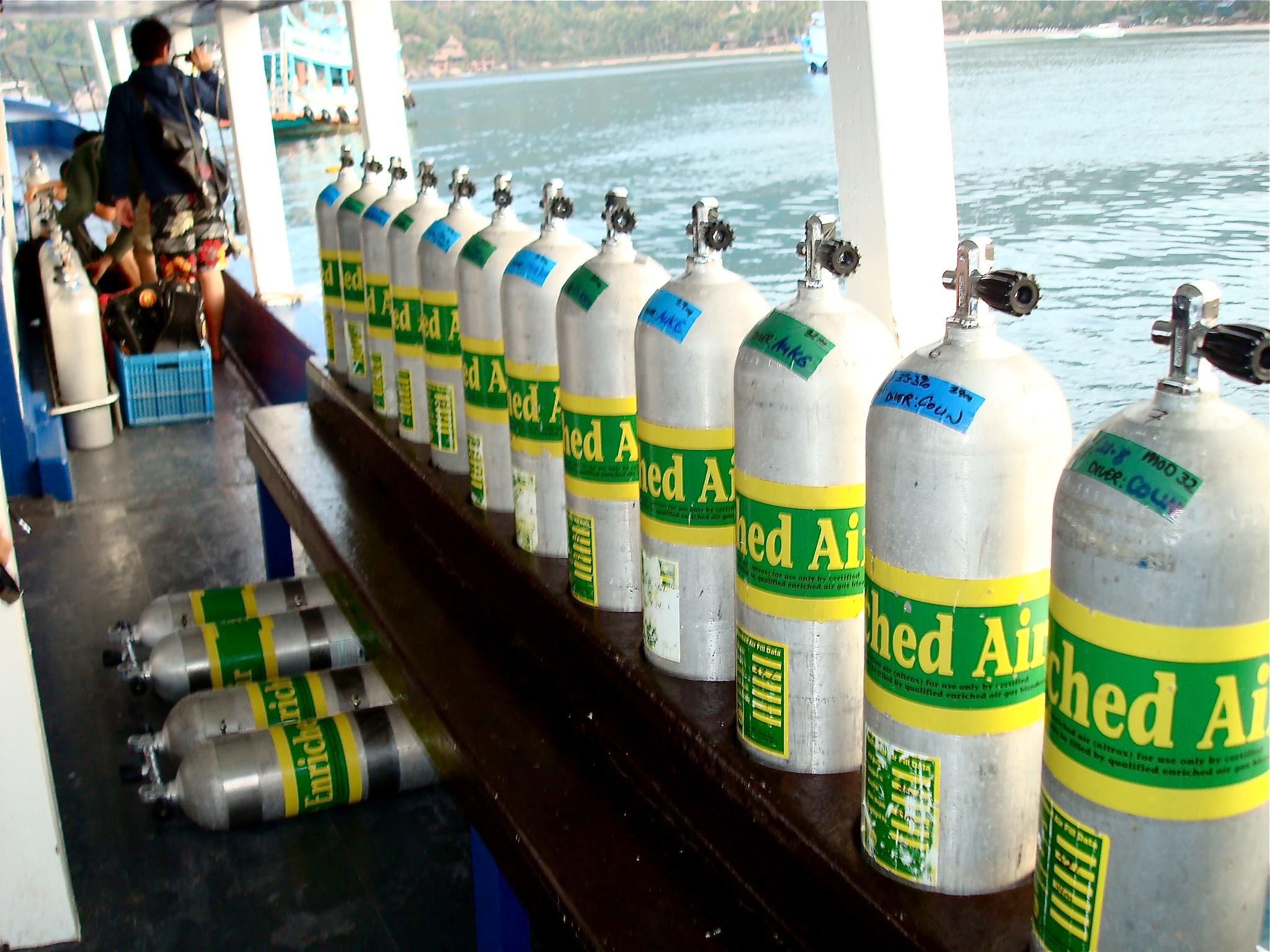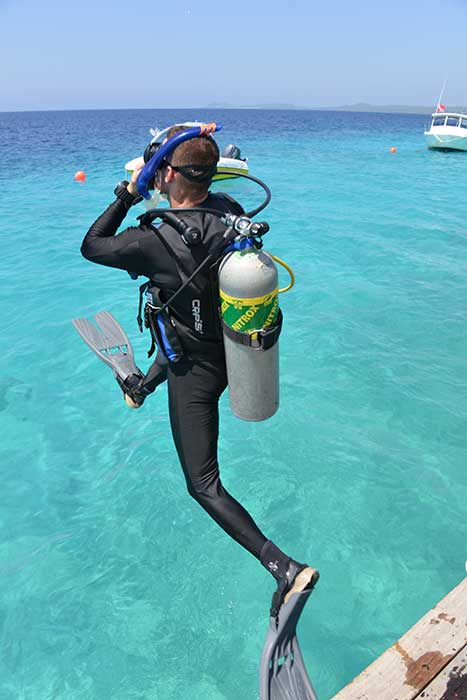Nitrox: Enjoy longer dives and discover the advantages of enriched air

Surely, you have lived at least once a situation in which you had to finish an amazing dive because your computer tells you that you are reaching your nitrogen limit. Then you feel like you wanted more, but you are not allowed to stay underwater as long as you wish! Did you know that with proper training you could actually dive longer with less risk of decompression sickness? That is what enriched air, also called Nitrox, has to offer!
What is the hazard related to nitrogen?
As a certified diver, you know that decompression sickness comes from the high level of nitrogen absorbed by our body. The longer we stay underwater and the deeper we go, the more and quicker nitrogen is absorbed. There is a limit that we can not exceed in order to prevent decompression sickness: this is called the no stop limit. In recreational diving we do not go beyond the limit of decompression, this is why we do not need to do decompression stops but we usually do a safety stop to avoid any risk of decompression sickness.
How does Nitrox solve the nitrogen issues and what are the advantages of enriched air?
The mixture of gases in a tank of Nitrox is the same as the air, but with a higher percentage of oxygen, and thus less nitrogen. Normal air consists of 21% of oxygen and 78% of nitrogen. In the enriched air the level of oxygen is often 32 or 36%. As the level of nitrogen is decreased, you have more time before you reach your no stop limit and you can dive longer. Moreover, many divers testify that they usually feel less tired after a dive with Nitrox. All this means that, by using enriched air, you can enjoy your underwater adventure for much longer time and get less tired than with the air.

Why is it important to be trained to use enriched air?
It´s not allowed to dive with Nitrox without a corresponding certification. It is compulsory to have a specific formation about it because the use of this gas can be hazardous. When we use enriched air, we have to consider different things:
– Oxygen toxicity: the deeper we go, the higher will be the partial pressure of oxygen in the gas blend. This is why breathing Nitrox at depth can be toxic for us. In many cases oxygen at depth can act on the central nervous system and cause unpredictable convulsions that can lead the diver to drown. So when we dive with Nitrox, we have to stay within certain depth limit. For example, using normal air, the maximum depth we can reach is 58 meters.So oxygen toxicity is not an issue for recreational diving as we are not allowed to go deeper than 40 meters (if trained for it). But if we use enriched air with 32% of oxygen, the limit will be 33 meters, and with 36% we can dive even less deep: 28 meters. In conclusion, the higher percentage of oxygen in the gas mixture, the less deep we can dive. It is important to know our limit before the dive. Some dive computers are compatible with Nitrox and can calculate the limit depending on the blend you are using, and it signals you when you are reaching that limit.
– Compatibility with diving equipment and maintenance
Oxygen participates actively in burning. This is why enriched air must be used with compatible materials. Always check with the manufacturer whether you can use Nitrox with your equipment. Also, when diving with enriched air, you have to maintain your kit with specific products that will not pose any hazard when in contact with oxygen. You also need to follow local regulations concerning oxygen standards. The tanks containing Nitrox must be clearly identified to make sure everyone is aware of its content.
How to become a Nitrox diver?
Without the specialty certification it is not possible to dive with Nitrox. We always recommend certified diver to follow Nitrox course because in some areas diving trips are mostly arranged with enriched air (in Egypt, for example). PADI offers a course to specialize in Nitrox. This usually takes one day, with optional dives. During that course you will learn how to use enriched air, the procedures to follow before a dive, how to prevent any hazard related to oxygen use etc. There is a small examination at the end of the course in order to be sure that the diver understands everything. Some dive centers include 1-2 dives in the course so that you are able to put your knowledge into practice straight away.
So do not hesitate anymore and discover the advantages of enriched air diving by following a PADI course!

Read also: